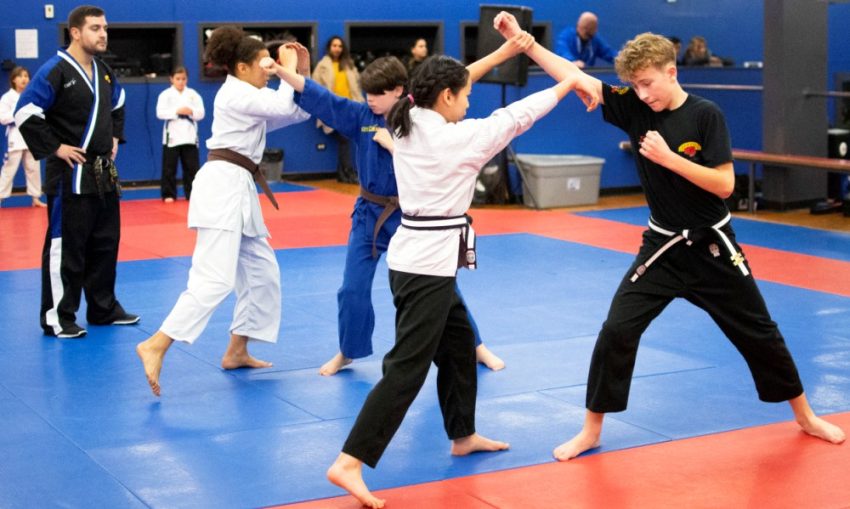Martial arts have long believed that food is a powerful medicine that can improve performance. Food is not only a powerful tool for improving performance, but it can also be a great way to increase a martial artist’s endurance and health at the gym. Foods that are not healthy can cause you to feel tired, but the right foods provide the energy and vitality necessary to excel in your training. A martial arts diet plan can help you maximize the benefits from your training.
Gracie diet
The Gracie diet is recommended if your goal is to train in Brazilian Jiu-Jitsu. This martial arts diet emphasizes healthy eating habits and avoiding sugary drinks. Besides that, it emphasizes the importance of drinking plenty of water and incorporating healthy food combinations into your diet. During training, your body requires a significant amount of recovery time. To avoid stomach upset, it is best to eat two hours before starting training.
First, take the baseline assessment to see if you can benefit from the mma gyms melbourne. This survey will reveal your current dietary habits and suggest ways to improve them. Then, you can follow a simple plan to make these changes gradually. The Gracie Diet program is broken up into several phases. Each phase will require about one week of adjusting. For the best results, you should follow the diet you have chosen.
The Gracie Diet consists only of three meals per week. The plan requires that you eat certain food groups in particular proportions and that you avoid snacking. You will have a better digestion and control your weight by eating three meals per day. Gracie practitioners discourage the consumption of sodas and snacks and encourage water intake between meals. This type of diet plan is well-known and trusted by many practitioners.
Shaolin warrior monk diet
The Shaolin warrior monks have achieved a worldwide reputation for their dedication to the study of traditional tai chi and their impressive displays of kung fu. The Shaolin warrior monks eat a largely vegetarian diet that has many health benefits such as a lower chance of developing heart disease, hypertension, or diabetes. A typical monk consumes Eight Treasures – eight different types of nuts and beans – as well as rice for extra bulk.
The Shaolin warrior monk diet includes fresh vegetables as the main course of every meal. It is important to note that solid foods are often restricted after evening, as digestion requires energy. The Shaolin warrior monk diet plan contains few sources of animal protein, so non-animal proteins are incorporated to make up the difference. Seitan is a vegetarian substitute for meat made from wheat gluten and soy protein. These foods can seem bland at first but are full of vitamins, minerals, making them an excellent choice.
The Shaolin monk diet plan includes foods that are rich in omega-3 fatty acids, such as sardines. It also excludes alcohol as these drugs can cause impairments in the body’s natural balance or concentration. Spices and pungent flavors are also avoided. They can be disruptive and cause emotional upheaval. This Shaolin warrior diet plan is essential for all aspiring warriors. So what should your Shaolin warrior diet include?
Bruce Lee’s diet plan
The diet of the legendary martial arts champion is full of real food and supplements. He ate four or five smaller meals throughout the day. He avoided white bread and refined sugar. In addition to eating real foods, he also drank tea and drank vitamin supplements. The following is a breakdown of his diet. Here are some of his favourite foods. Refined sugar and white bread are two of the most important foods to avoid.
As a martial artist, Bruce Lee enjoyed Italian food, spaghetti dishes, and steak, and went to McDonald’s on occasion. His diet consisted of four-five small meals and some fruits throughout the day. He also ate congee made with organs, whole grains, and other ingredients. His secret? You can eat whatever you want, but follow the rules. Even if you aren’t training often, you can still maintain a lean physique.
On weekends, Bruce Lee did less demanding workouts. He trained for approximately four miles each morning and for half an hour at night on weekdays. He used a Fartlek type of workout that increases speed for short periods of time, then returns to a steady pace. He also skipped 30-minute runs and 45-minute cycling sessions. Bruce Lee also added circuit training to his cardio sessions, which have been declining in popularity in recent years. His regimen must have helped him to be more resilient in the martial arts.
